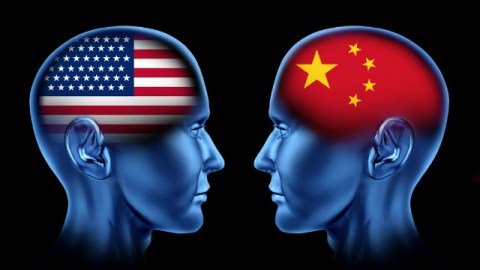Anxious Eagle, Rising Dragon

Most commentary on U.S.-China relations understandably focuses on the challenges that a rising China poses to America’s superpower position and the incentives that America has to prevent China from displacing it. But what about the challenges that a weak China poses to America and the possibility that China may not be all that enthused about America’s growing inability to underpin the international system?Bill Clinton addressed the former in a speech to the U.S. Institute of Peace 13 years ago:
[T]he weaknesses of great nations can pose as big a challenge to America as their strengths. So as we focus on the potential challenge that a strong China could present to the United States in the future, let us not forget the risk of a weak China, beset by internal conflicts, social dislocation and criminal activity, becoming a vast zone of instability in Asia….while we cannot know where China is heading for sure, the forces pulling China toward integration and openness are more powerful today than ever before. And these are the only forces that can make China a truly successful power, meeting the demands of its people and exercising appropriate and positive influence in the larger world in the 21st century. Such a China would indeed be stronger, but it also would be more at peace with itself and at ease with its neighbors.
Given China’s centrality in the global economy—it accounted for 10% of gross world product (GWP) last year [1]—the dangers that President Clinton outlined are even more important to consider today.
And here’s Zbigniew Brzezinski on China’s desire to see a gradual, relative American decline, not an absolute, precipitous one: China “prudently accepts the existing international system, even if it does not view the prevailing hierarchy as permanent. It recognizes that success depends not on the system’s dramatic collapse but on its evolution toward a gradual redistribution of power. Moreover, the basic reality is that China is not yet ready to assume in full America’s role in the world.”
If only Clinton and Brzezinski’s judgments played a greater role in shaping how the U.S. and China assess each other’s strategic positions. The global financial crisis has led Chinese observers to overstate American decline (although developments of this year suggest that China’s “triumphalism [is], at best, premature, and perhaps seriously misguided”). For their part, American observers tend to exaggerate China’s strengths as well as its weaknesses. This duality reflects, on the one hand, a fear of what China will do with its growing clout; and, on the other, a conclusion—perhaps even a hope—that China’s breathtaking ascent will prove to be ephemeral, like Japan’s two decades earlier.
Those who question the China hype point to the uprisings in the Middle East and North Africa, which demonstrated that even those authoritarian regimes that seem to be stable cannot take their rule for granted; the fallout from Bo Xilai’s ouster, which has widely been characterized as the most serious threat to the Chinese Communist Party since 1989; and a stream of disappointing economic data from China last week, which has revived fears of a hard landing there. Without downplaying the significance of these challenges, it’s important to appreciate that China has faced far more serious ones. Just consider a few of the disastrous episodes that it has overcome in the past 150 years:
If it can recover from such upheavals, it can probably endure through its current difficulties, however many hiccups and setbacks it experiences along the way. In short: China isn’t going anywhere. Nor is America. The drama of the day, the week, and the month—even the year—shouldn’t obscure a basic reality: America and China are, and will likely long remain, the anchors of the international system.
[1] According to the CIA World Factbook, GWP last year was $70.16 trillion, and China’s GDP was $6.989 trillion (both numbers at official exchange rates).
[2] According to the late Angus Maddison’s data, China’s GDP decreased from $451 million in 1958 to $365 million in 1961.
Follow Ali Wyne on Twitter and Facebook.
Photo Credit: Lightspring/Shuttershock.com





